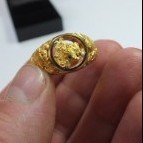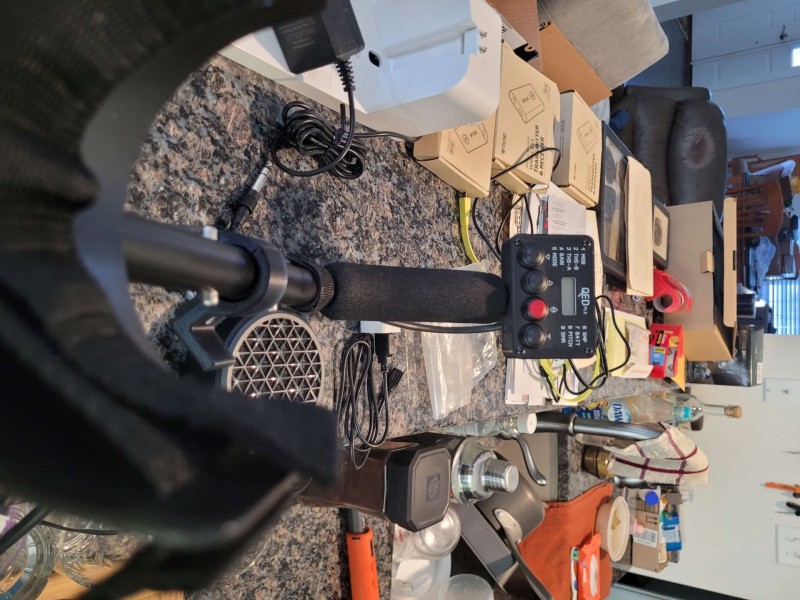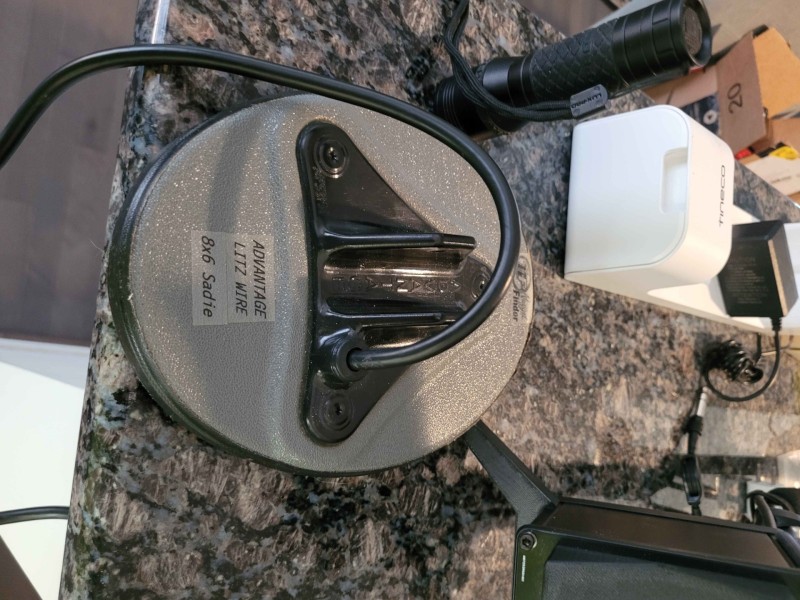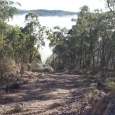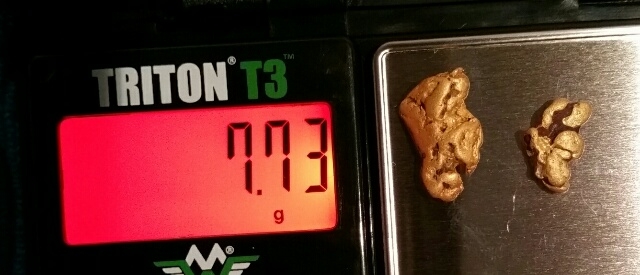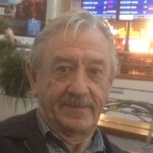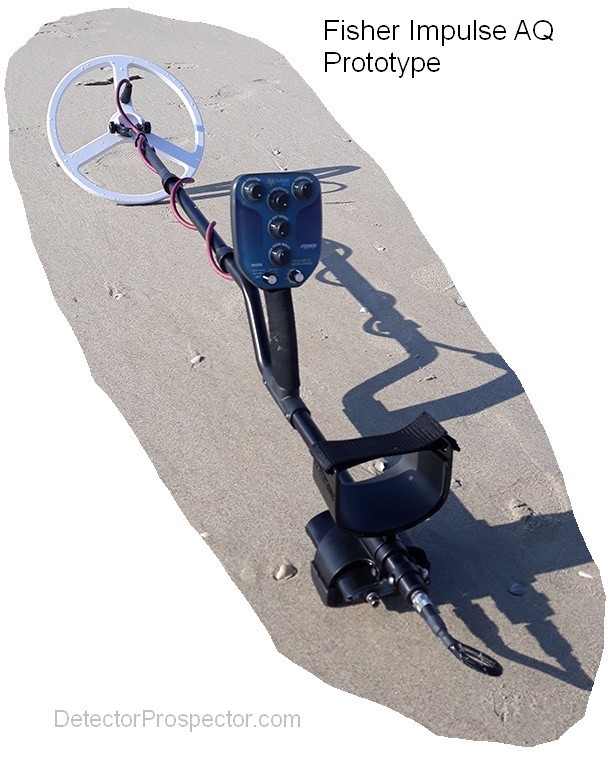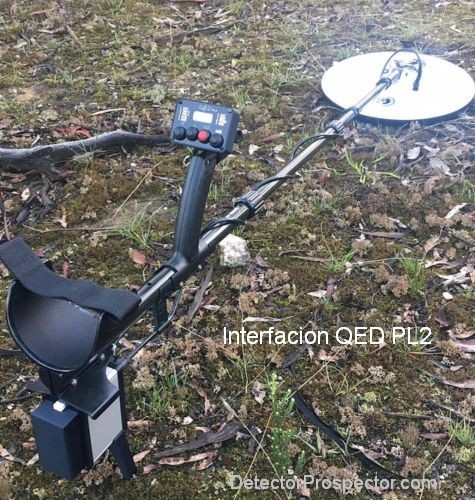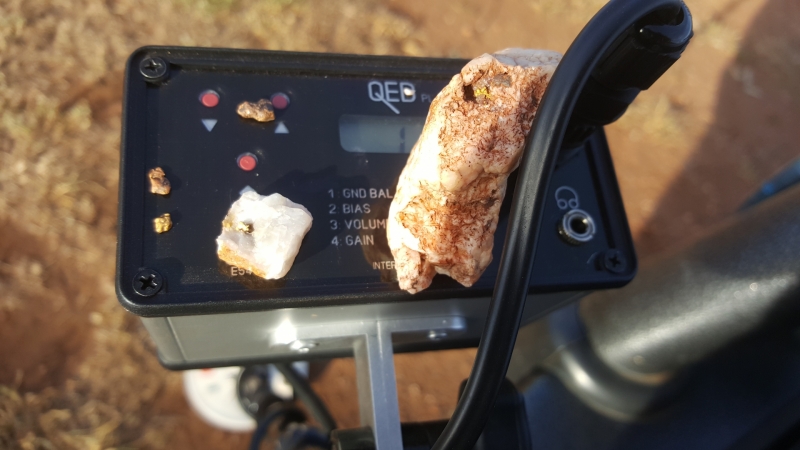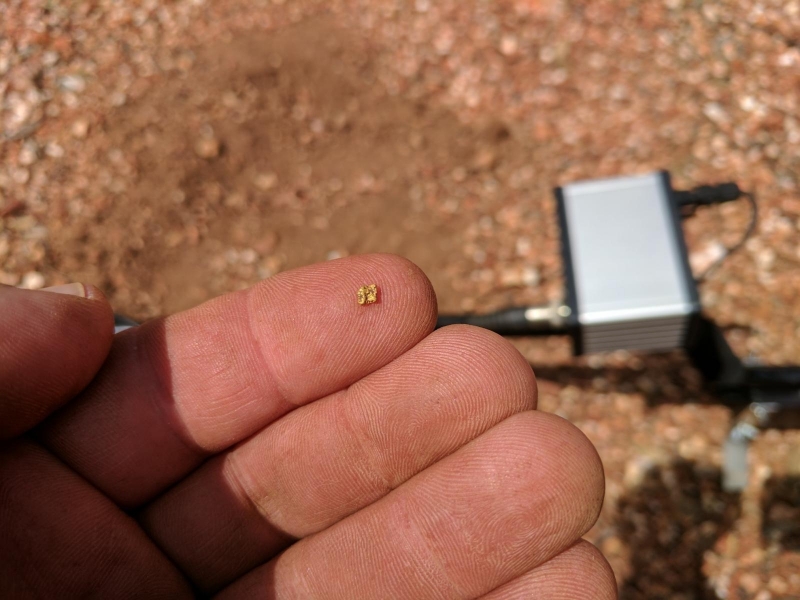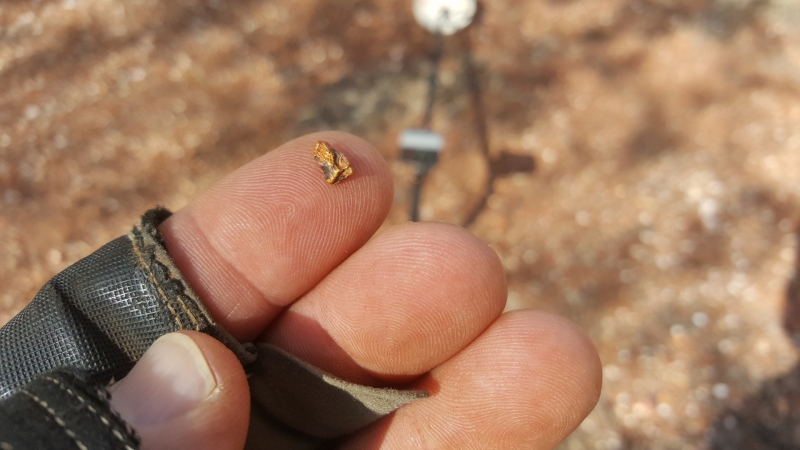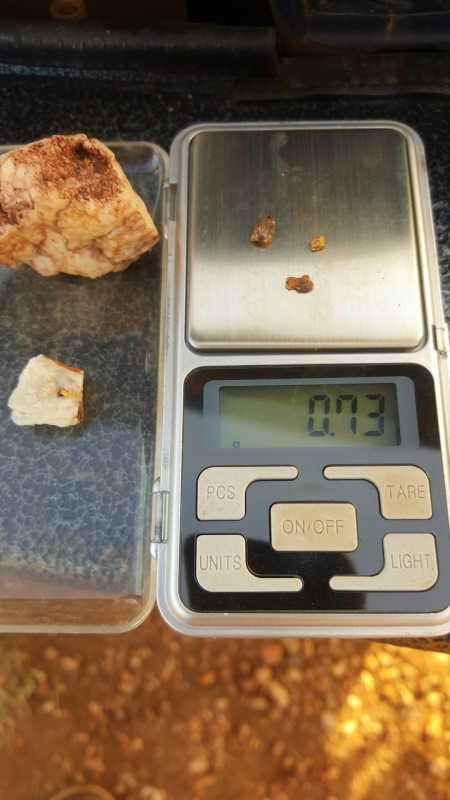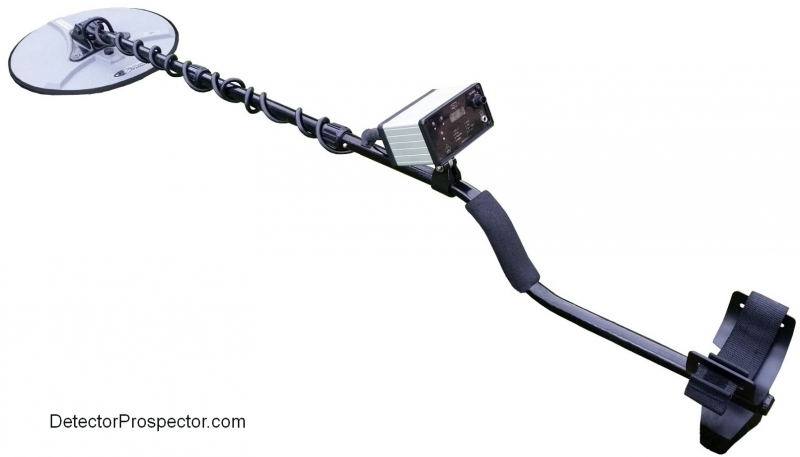Search the Community
Showing results for tags 'qed'.
-
The technology is also PI technology, which is also relatively lightweight and has good stability for watching videos. But there don’t seem to be many users. . . . .
-
- 92 replies
-
- 21
-

-

-
Hello All My First major outing with the QED. I intend to write a review here after ever major outing with the QED, until I understand the detector. This also posted in AEGPF. This is my first PI detector. Price, Capabilities and Aussie made were the driving factors to buying this machine. I went to Warwick GPA for two days. Two purposes for the trip one to recon as much of the all GPAs as possible and two to test my new QED. Recon was to look for potential Dry wash locations. That a different story. I found all the trash left in the GPA. Bullets, horse shoes, rusting tin, slug gun pellets. Nothing very deep though, all at only a few centimeters. This concerned me so I buried a five cent piece at 20cm on its edge to make it as small a target as possible. Picked this up no problems at all. Full repeatable target. So I am hoping I just didnt walk over any deep targets I took an XP ORX and my QED QED got a good 18hrs of use over the two days and used my ORX on some of the same ground: I found it interesting on how the VLF reacted compared to the QED. ( Not Direct comparison test) My QED setup is as follows: QED PLII with Detech Shaft 11" Detech Ultra sensing Quest WIFI to a set of (Apple ipod earplugs ) I am going to buy a good set Warwick I found has a great difference in minerals across the area. So I had to make sure I basically reset the QED every time I changed location Quest WIFI - Worked very well. Battery lasts for 24hrs, just as well as I forgot to turn it off most of the time. Had receiver in my top pocket so my earplugs never got in my way. Forgot I still had them in a couple of times Overall very happy with this audio setup Detech shaft - Excellent 11" Detech Ultra sensing coil - Being my first coil other than HF on ORX - I a had to get use to it sounding hollow while passing it over the ground. Being hollow cuts down on weight I suppose which is good. I had to Factory Reset at every new spot I detected, as trying to adjust from the previous location was to hard. So in the end I just factory reset when I turned in on at a new location and went through the setup process. Working through the settings starting at 2, then 1,3,4,5 I talk about each setting in the order I used in my setup process THS-B - Setup range was 49 to 59 so around 54 was mid point. I used it at mid the entire time so I would received an even tone for Small and Large targets MGB - Setting ranged from 170 to 210. I very quickly got use to checking MGB on the Fly. I did find myself trying to balance in the wrong direction quite a a lot, this just meant spending time cycling back the other way to get correct MGB ( Silence in the Ear Plugs). MGB is achieved on the down motion of the coil, but I was receiving a tone on the up motion as well. Once I got use to this I adjusted the MGB until neither tone could be heard. Once MGB was achieved the detector was silent. THS-A - This setting initially confused me a bit, as to me it I felt it wasn't really doing anything, after watch the training video over and over and reading some more I understood its relationship to THS-B. This how I used it - (This may be totally wrong so I will need some feedback here). Once I achieved ground balance I would adjust THS-A up until I could just here a tone being produced I would then turn it down until the tone was only just audible. I took this as being the sweet spot for THS-A. Around 50 all over the GPA Gain - Adjusting Gain up above 2 produced an unstable response from the QED so 2 was the max setting for most of the trip. Adjusting Gain up also effected the tone produced by THS-A. I put the Gain up and went back to THS-A to try and adjust the tone out. This had no effect. So reset THS-A and lowered Gain to make detector stable Mode - This setting is coil and ground specific to achieve a balance. I found that 3-4 was good for all areas I detected. Anything higher or lower made the detector unstable After going through this setup( Only took a minute or two). QED was basically silent except for the very low tone that I could only just here from THS-A. While swinging I kept the coil in contact with the ground. I did not receive any coil to ground contact noise. At times I had to check that the detector was still on by passing it near my boot to get a target response ( steel in boots) The silence surprised me, but was excellent as I didn't have to have continual noise in my ears detecting In patches this happened. I would get single tones from the detector both high or low, swing back past the spot of the tone, nothing. If I started to get these tones, I sometimes stopped moving the detector and listen, random tones still produced (EMI ground mineral) ? I also came across patches that produced multiple random tones. For example a patch 1m square where the detector was silent all around it, but just produced random tones all over the 1m Square. Nothing repeatable in one spot. I dug this out of curiosity, after removing a couple of cm all tone was gone and no target could be found or single disappeared. So eventually I just ignored this type of signal response putting it down to soil type\minerals. I also had tones that produced like a wobbly type noise that was over one spot that sometimes came and went. When dug target disappeared or I found I just spread the target noise over a wider area. When target was found the tone was easy to recognize and repeatable over the one spot Please feel free to give me feedback on my setup. I dont know if I am reducing the small target detection or loosing depth This was my first experience with the QED. Overall I am very happy and excited with my purchase. All I need to do is walk over some yellow and find it. I think my next move is to setup a test patch somewhere. Lead sinkers from sub gram and up
-
Lanny, there is a super light weight PI built here in Australia, at a good price. I use one and love it. Unfortunately it is not yet available in the USA. It is called the QED. It is being constantly improved by the dedicated inventor. Hope one day you will be able to get one.
-
Been a lot of chat about x coil for ML. I would like to see or read a good comparison on the X coil vs the rest on a QED. I am going on a trip to Western Australia in June, so I need a larger mid range coil. I have received advice that the 14" Coiltek is the coil of choice. All the talk is about x coil, but there hasn't been any real comparison posted. I was thinking 15"x10" x coil could be a contender, but lack of comparison or direct info makes it hard to make a choice. Correct me if I am wrong 8" Sadie = Small targets at shallow depth Low ground coverage 11" Detech Ultra = Small targets a little more depth bit better ground coverage 14" Coiltek = More depth start to loose smaller targets better ground coverage 15" x 10" = ??
-
I consider myself to be extremely fortunate due to the fact that the entire age of modern metal detecting has taken place over the course of my lifetime. I was too young in the 60's to be one of the many famous names that were there first on the ground with these new toys that go beep. That's good though for me as most of them are gone now and I'm still here. I got my first detector at the true dawn of the modern detecting age when I got my White's Coinmaster 4 in 1972. It was one of the first of the new "TR" machines that were the starting point for what most of us use today. Mine was as basic as a detector gets, no ground balance existed yet or discrimination. Just a couple inches depth and a beep, dig it up. So I have been involved in detecting now for 47 years. I started my business while in high school in 1976, and have been involved in metal detecting pretty much daily ever since. Anyone who followed my online presence starting in 1998 may see a pattern. I have been involved in some top end machines, some VLF, but basically almost every ground balancing PI made has been in my hands at some point. I had a vision in my mind based on my background in computers that told me what was possible and where we were headed. I was particularly incensed when an upstart company from Australia showed up the industry leaders at the time with the world's most powerful gold detecting PI machines. All the more so when I heard White's had a shot at it and passed. I made it my mission to jump on and foster anything that came along that might compete, and so I was involved with the Garrett Infinium, the first U.S. ground balancing PI. I had a lot to do with White's finally producing the TDI. Yet the fact is nobody ever seriously took Minelab on, and finally they won me over because they delivered when the rest just milked us. Minelab has been the sole company at the forefront of this technology since the SD2000 was introduced. All this time I have wanted two things. A vision in my mind of what a VLF could be. And a similar vision regarding a PI. Both those visions basically revolved around something a normal person could use both as regards ergonomics and price, two areas we kept getting bent over on for 20 years. Long story short I am grateful to Minelab for allowing me to be involved in the machine that delivered on my first vision. The Minelab Equinox is the first machine ever that really can do any VLF metal detecting task and do it well. In any one area it may not be "the best" but no one machine delivers across the board like the Equinox. My VLF quest is over. I will use an Equinox as my primary unit until a detector comes along, probably a Minelab, that does what it does but better. No more VLF buy and try for me. Yay! In 2017 I laid out my vision for the PI I wanted. The price was kind of a set the bar high (with a low price) thing so there is a little wiggle room there. But not a lot... the machine price should be something most people can stomach. As far as I am concerned the GPX 4500 sets the standard at $2699 both for performance and price. The TDI wins on ergonomics but loses too much in performance for me. All I really wanted was a GPX performance in an ergonomic package, and we all know it can be done. That is what is so frustrating. It's one thing to introduce new tech but all I want is proven tech packaged right. Garrett has really been a disappointment not putting the ATX in a light box. They can do it but so far have refused. I would have been satisfied with that. Right now I am calling the Australian made QED as being the default winner of my challenge. The rough edges have been smoothed out, and it's got the ergonomics, coil selection, and price all right. I am not going to argue with anyone over performance. Based on what I know it's good enough for me to go find gold and easily beats the TDI and is competitive with GPX. Good enough for me and good job boys. The only niggle is no FCC approval for U.S. sales, no U.S. dealers or service. But by end of 2020 if there is nothing better I will have one anyway. But we have the Fisher Impulse AQ on the verge and a dry land prospecting version promised. I would be crazy not to wait and see what develops there. I sold my GPZ for many reasons, mostly because I was not going to be detecting much this year, but I resolved when I sold it I would wait until my vision appeared. I knew it was close. I decided I can have fun enough with Equinox until that happens. Put as simply as possible I want a reasonably powerful PI packaged like a good VLF that most of us can afford. Something that can get in and out of a small backpack with an hour of labor being involved. So I am tossing down the gauntlet. I have my magic VLF and am looking for a mate for it. Right now QED and Impulse are in the running. And it's up to Minelab, Nokta/Makro, and sure, let's toss Garrett and White's in there also. It's time to deliver as by the end of 2020 I am getting one. I prefer in the spring but if something is one the radar I may wait. By 2021 I will be using something that finally fulfills what this high school kid from Alaska has known would happen someday. And I got to be there and see it all from start to finish. As I said... a very fortunate soul! Interfacion QED PL2 Fisher Impulse AQ
- 40 replies
-
- 16
-

-
- detector tech
- fisher impulse
-
(and 1 more)
Tagged with:
-
So far there has been no real “direct” reviews of the QED, in effect just innuendo clouded by politics, which is not helpful. With the help of a friend I've just finished some testing of the QED and want to share our impressions here in the hopes of getting the ball rolling for some quality discussions (but maybe this is being too optimistic?) We hope and believe our tests were rigorously objective, the QED was used for general gold hunting and also comprehensively tested on buried real gold pieces of various sizes in a variety of soils, considerable care was taken to ensure no placebo/bias.* We deliberately tested on only frequently detected but historically very productive public fields, not private property in which it can be relatively easy to find gold using any technology due to only ever seeing a few detectorists. First and foremost, important details of the QED's method of operation that are different to other detectors which needs to be clearly understood: Unlike Minelab detectors, the QED has a “dead zone” that can be varied using the Volume control. The threshold is set using the Bias control and has 2 different audio threshold settings, an upper and a lower value. When the Bias is turned down in number below the threshold lower value, OR, turned up in number above the upper threshold value, the “Threshold” audio increases as per usual. Suppose for example, the lower audio threshold bias value of the Bias control happens to be 50 and the upper threshold bias number happens to be 60. Then if the Bias is turned down below 50 OR turned up above 60, the audio “threshold” level increases as per usual. For these threshold examples, 50 and 60, small gold (fast time constant targets) “in effect” produce signals less than 55 (half way between 50 and 60), and larger gold “in effect” produce signals more than 55. If the Bias is set at the lower threshold limit, 50 for example, then the detection of small gold will give the usual INCREASE in audio level response, and larger gold will give a BELOW threshold level response, OR If Bias is set at the higher threshold limit, 60 for example, then the detection of larger gold will give the usual INCREASE in audio level response, and smaller gold will give a BELOW audio threshold level response. Similarly with ground noise; some ground noise will in effect produce signals below 55, so that if the Bias is set at 50, this ground noise will give an increase in audio sound, but if the Bias is set at 60, this ground noise will give a below threshold audio response. Conversely, if the ground noise is in effect above 55, then if the Bias is set at 50, this ground noise will give a below threshold audio, but if Bias is set at 60, this ground noise will give an increase in audio level. Signals in effect BETWEEN 50 and 60 are in the “dead-zone,” for which the audio is below threshold. Signals in effect below 50 OR above 60 give an increase in audio. So if threshold is set at the lower threshold of 50, then faint signals from small gold will give an above threshold audio, and large targets a below threshold audio. Whereas its the opposite for the upper threshold of 60, faint signals from large gold will give an above threshold audio, and small targets below threshold audio. So for shallow small gold select the lower threshold limit, for big deeper gold select the upper threshold limit. Bigger target signals will produce above threshold signals regardless of whether they are small or larger targets. However the Volume control controls the dead-zone width; the gap between the upper and lower threshold Bias settings, that is, the dead zone gap is increased by turning the Volume down, or decreased by turning the Volume up. In fact the QED can be set to operate with NO dead-zone (like the usual Minelab PI audio). To do this: a. Vary the Bias between the upper and lower threshold. Note the gap. b. Increase volume a bit. c. Re-do a. and note the decrease in the gap. d. Continue to repeat a, b, c until there is no gap. (This will allow some feel for true ground noise etc.) However the QED audio has a very low level signal EVEN if below threshold, This below threshold faint audio signal is just the pitch signal only, and detects all signals, ground noise, target signals, whether long time constant or short, and EMI. But this below threshold pitch sensitivity is not as acute as the audio set at threshold per point 2 below, and it is very soft. Yet even further, if a target or ground noise (or EMI) does drive the audio below threshold, the nature of the audio is that it has the usual “re-bound” response once the coil has moved over and past the target or ground noise. I refer to the lower pitch audio following the initial target higher pitch audio (“high-low”) or the opposite; the higher pitch audio following the initial target lower pitch audio (“low-high”) effect known from Minelab PI's. So for moderately weak target signals that cause the audio to dip below threshold once the coil moves beyond the target and the audio then rebounds above threshold. To recap; for these targets, as the coil passes over the target the audio goes first below threshold THEN above the threshold. However for the fainter of these target signals (the important signals one listens for in thrashed ground), this rebound signal is hard to discern compared to the same signal that would occur if the Bias had been set at the alternative threshold setting for which the audio signal then would have given an initial increase in threshold as the coil passes over it and then a below threshold rebound. Therefore, it is important to understand that you EITHER need to set the Bias to chase the faint small targets in shallow ground (Bias at the lower number setting), but lose out a bit on the faint large target signals OR set the Bias to chase the faint larger targets in deeper ground (Bias at the higher number threshold setting) but lose out a bit on the smaller targets. The QED has a “motion” audio response; meaning the coil has to be moved to hear a signal. It can be operated both quickly, and also, remarkably slowly. If the coil is moved “remarkably” slowly it is possible to hear the average audio detect a very faint target above the audio “background random chatter”, considerably more readily than if the coil was moved at a typical realistic operational speed. When depth testing and when you know where the target is, beware that you do not slow down the coil swing to an artificial unnatural swing speed to enable the detection of a deep target at its known location.* Important recommendations: 1. It's very important to get the threshold (Bias) spot on for optimal results, If the threshold level is too high, then faint signals get drowned out, but if the audio threshold level is too low then only the residual very faint pitch signal remains, but this faint pitch only signal is less sensitive to target signals than the audio set optimally as per point 2 immediately following. 2. The threshold must be set so that it is just audible; in effect just immediately below the “real” audio threshold signal, so that what you are hearing is just between only the pitch signal and actual above threshold audio. 3. Note that the effective principal threshold control (Bias) is temperature dependent and requires reasonably frequent adjustment over time as the ambient temperature changes to get best results. Therefore there is NO actual specific optimal Bias number setting, rather it entirely depends on temperature. It can be as high as 70 in very hot conditions 4. Once 2. and 3. are optimally achieved, you will find that the GB setting has to be spot on for best results. If you find that it is not critical, you really need to re-address points 2. and 3. 5. The QED does produce ground noise that sounds on occasion like a target. If you aren't digging some ground noise you do not have it set up properly, especially in variable soils. With ANY detector (automatic GB or Manual) altering the GB setting slightly to eliminate a faint “deep target-like signal” will result in eliminating the faint signal whether it is ground noise OR in fact a deep real metal target. 6. You need to listen to the soft “subliminal” threshold of the QED very carefully, quality headphones are a must. 7. “Gain” acts as a sensitivity control as you would expect. I suggest that the QED is best used as a specialist very fine (Small) gold detector. It produced a reasonably clear but quiet response to the extreme small gold (of the order of 0.1 g), we managed to find 5 tiny pieces in well-worked ground in all totaling 1 gram, although the SDC would have picked 5 of the 5, but not so well in one location due to power line noise (This could be remedied somewhat by lowering the Gain of the SDC and using minimal threshold). However, we purposely went over exactly the same ground with the SDC with the SDC set at a lower threshold and 3 on the gain, and then found 3 more pieces of gold; we are 100% sure we had already passed the QED exactly over the target locations so we put this down to QED ground noise masking targets. The QED struggles compared to the SDC in the more mineralised soils, however the QED does seem superior to the ATX. To get the most out of the QED, use a small coil such as an 8” Commander mono, and set the Mode as low as possible so long as the ground signals do not become too intrusive. Usually 1 or 2 is OK for Minelab coils, but some other coils may produce too much ground noise at this setting so you may need to increase the Mode to 3 or above dependent on the ground. Further, we got some very thin aluminium foil and very gradually trimmed it down until the SDC could no longer detect it. This represents particularly fast time constant targets (“extremely” small gold), and found that the QED did still detect it, but only within several mm of the coil surface, not further. But this does mean that the QED will detect extremely small shallow pieces that the SDC will not. Alternatively we suggest the QED is also a suitable lightweight low-cost patch hunter when used with a large coil with the Mode turned up so that there is less ground noise. For the sake of completion, to answer questions posed of the QED depth for an Australian 5 cent piece compared to the Zed both using the same sized coils. We measured this carefully and we are not prepared to give exact figures to avoid any trivial arguments, other than to say that the QED detected between 60% to 2/3rd of the depth of the Z. The QED susceptibility to EMI in areas remote from mains compared to the 5k on EMI noisy days? In one word: “Good. The QED susceptibility to mains in urban areas compared to the SDC or Zed? In two words: “Typically Bad.” The QED’s main strength is its cost, light weight, ergonomics, and simplicity of use, and yes it IS definitely simple to use, but a bit “fiddly.” It has no “magic settings” once you understand exactly how it operates as described above. Going back to the SDC really highlighted the difference a light weight detector can have on general comfort and enjoyment of detecting, and our experiences with the QED underscored Minelab's poor ergonomics. In our opinion the QED fits a market where people are looking for a cheap detector capable of finding small gold in thrashed areas, and are wanting more coil choices without the specialised "one size fits all" approach of the SDC. Good value for money. Its main weakness is its underlying ground noise, which although having the advantage of being “hidden” in the dead zone, nevertheless limits depth compared to lower ground noise capable detectors, for targets other than the very fast time constant targets. In summary it works relatively best in the less mineralised soils for small gold. Beyond the scope of the above suggested prospecting (very small gold & patch hunting mainly in relatively unmineralised soils), I choose not to comment further, other than we will not be using the QED for purposes other than secondary activities, and still intend to use other well-known detectors for primary prospecting activities because of their other advantages. No doubt others with QED's will disagree with us. We welcome this, and would be happy to be proved wrong. Ultimately, time tells the truth by substantial gold finds or lack thereof in well-worked ground. *Note: because of the subtle audio, it is easy to imagine you are “hearing” a target above the general background ground noise when you know where it is. We endeavoured to avoid this tendency.
- 37 replies
-
- 23
-

-
AussieMatt pointed out on another thread that lo and behold, the QED has appeared. I am not going to mess with all the long back history. Instead, it looks like we may finally have a new detector model from an independent designer after so many false starts over the years. If nothing happens to upset the cart reports should be coming in from Australia in the near future. Anyway, congrats to bugwhiskers and company. I truly do wish for it to go well for all involved.
-
I have been watching a thread over on PA and it seems there are a few problems, But some of the replies from those pro qed folks seem a little daunting when you consider that the main issue is the ground balance and threshold, which brings to mind JP's review. I find the TDI's a bit worrisome as in when to deploy each of the conductivity settings and find it is much easier to run the SL set to ALL, the QED would drive me nuts when you take the latest reply in to account having to do a Math equation to set the GB/Threshold, anyway here is the link maybe one of you wiser people can translate it all in to common English. https://www.prospectingaustralia.com.au/forum/viewtopic.php?id=23399
-
"Righto, this is based on my last 4 or 5 trips combined. Today was the 2nd time I've been able have 2 QED,s on the ground as well as a GPX 4500 and a souped up GP 3000 to compare." https://www.prospectingaustralia.com.au/forum/viewtopic.php?pid=341762#p341762 https://www.prospectingaustralia.com.au/forum/viewtopic.php?pid=341951#p341951 QED Thread On This Forum
-
The new compact, super light PI from Ballarat, Australia. This machine uses any Minelab PI compatible mono coil and is dynamite on small as well as larger gold. It is almost totally unaffected by EMI enabling it to be used near or practically beneath power lines. All hand built, on a limited production scale, this little beauty is creating great interest in Australia, where it can handle the highly mineralized soils.

